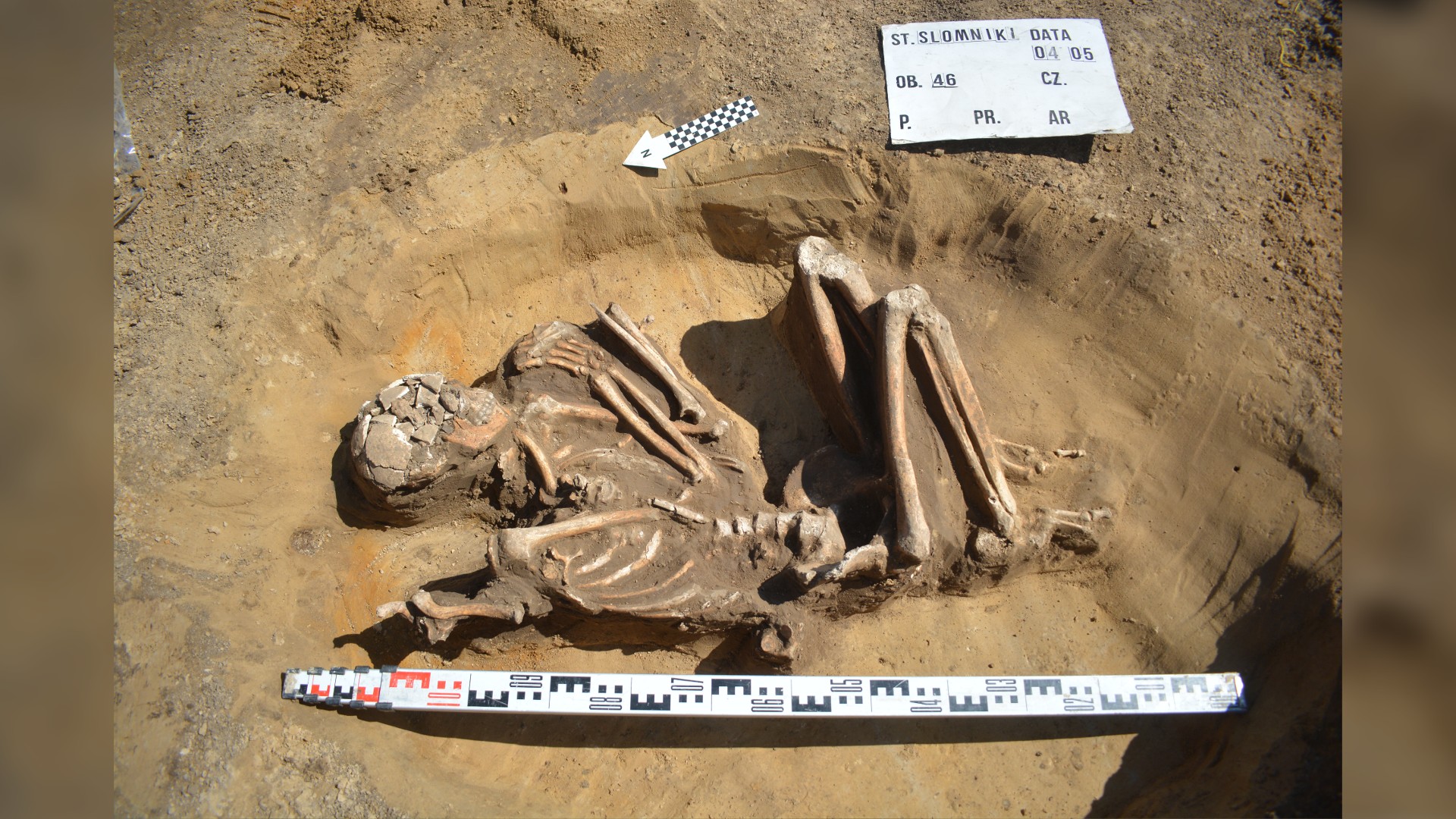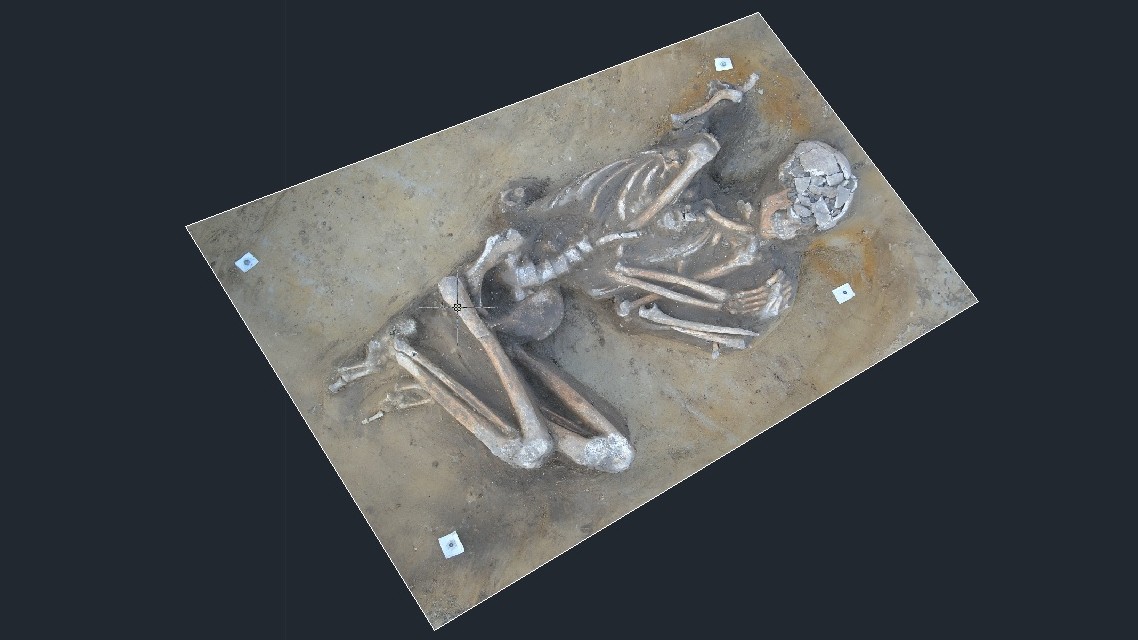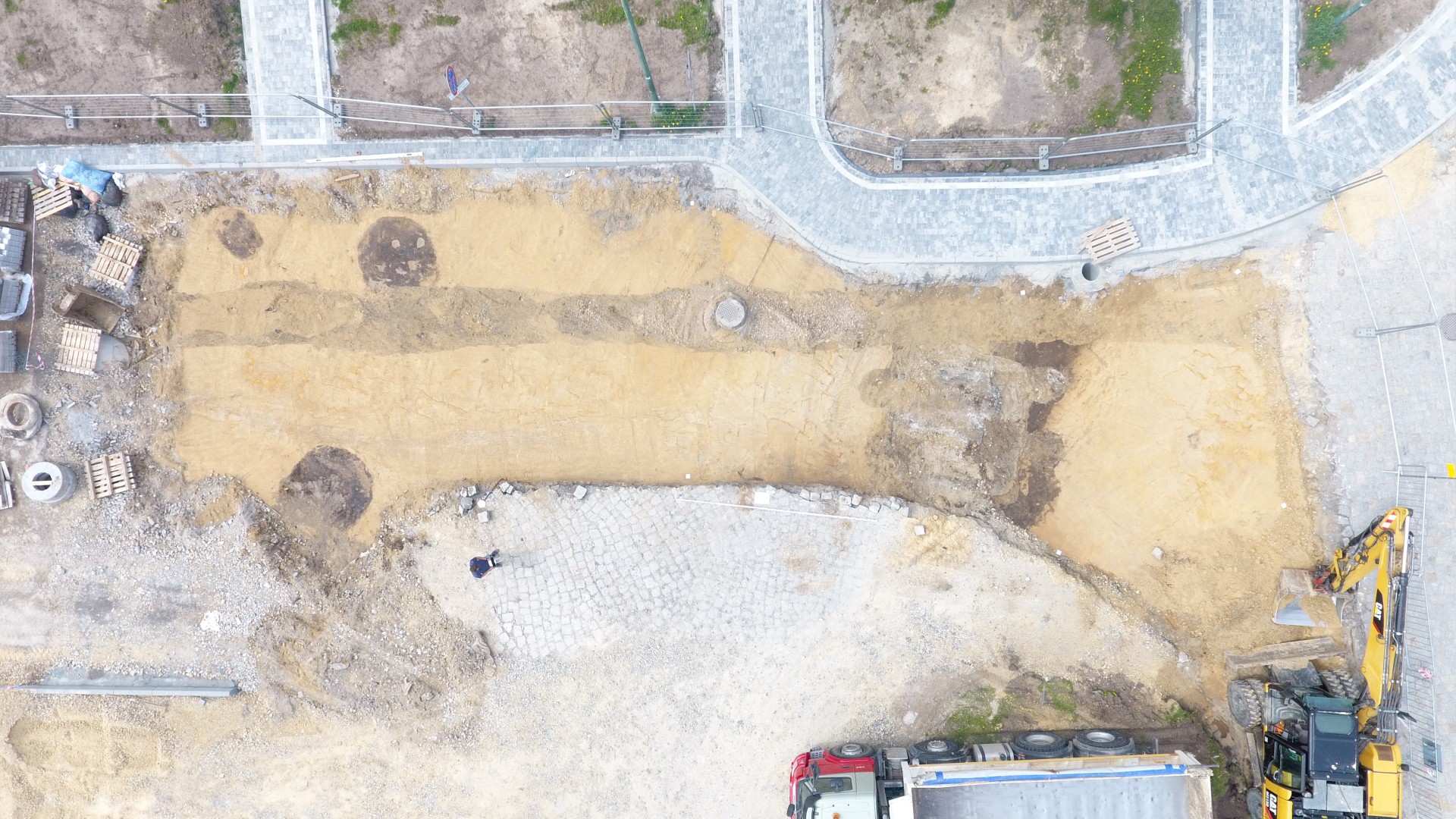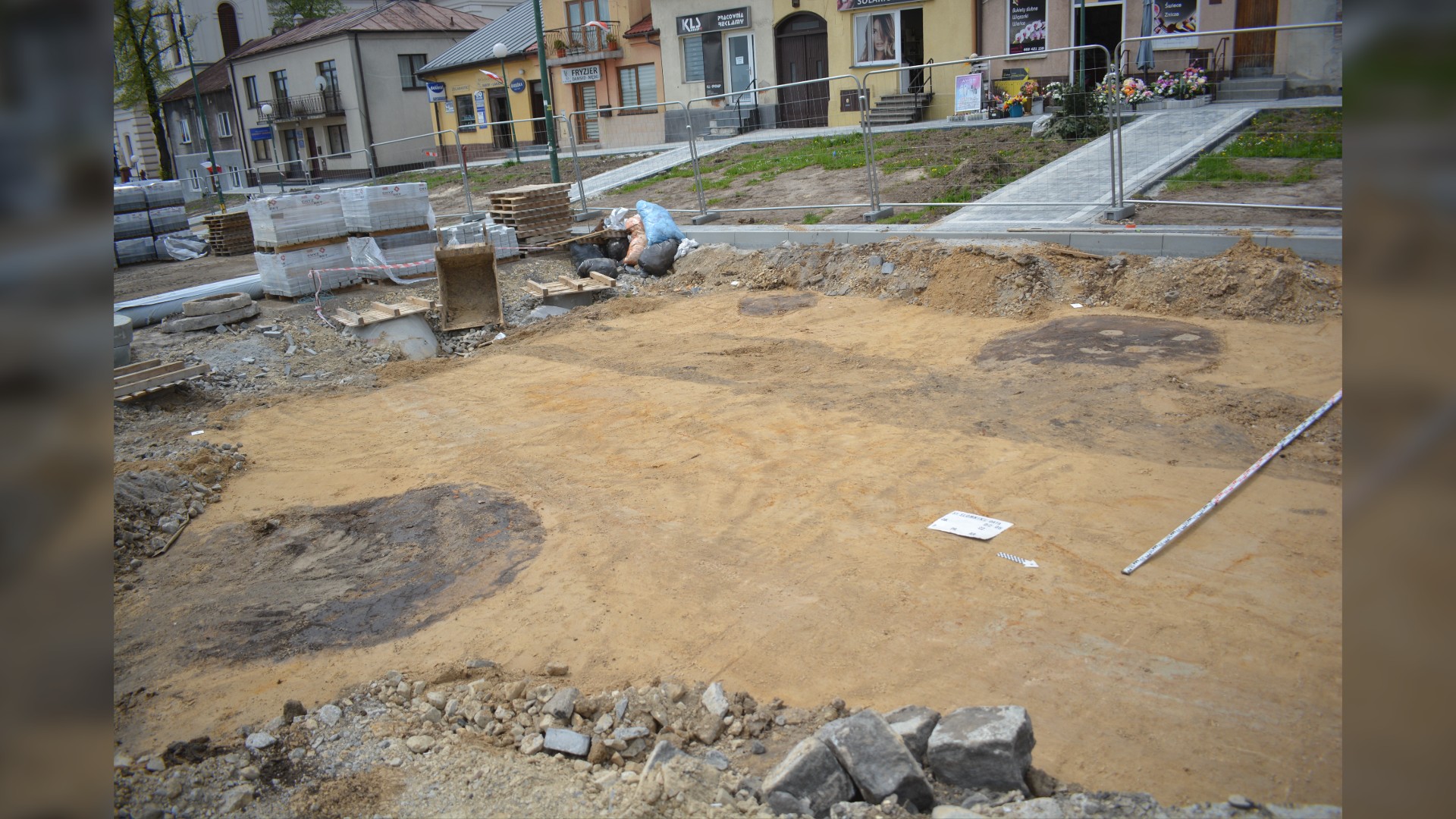
Archaeologists in Poland have discovered the full skeleton of a person who lived around 7,000 years ago near what is now Kraków.
The Neolithic skeleton, unearthed during the renovation of a town square in Słomniki, is in excellent condition and was found with fragments of pottery beside it. Based on the style of pottery, which belongs to the linear pottery culture, the burial likely dates to around 7,000 years ago, Paweł Micyk, an archaeologist with Galty Earth & Engineering Services who excavated the site, told Live Science in an email.
The individual was buried in loosely packed soil that has a non-acidic chemical makeup, which helped preserve the skeleton, Micyk said.
"At the moment, we are unable to determine who the buried person was," although an upcoming analysis by an anthropologist will likely reveal more information, Micyk said. Additionally, the team plans to radiocarbon-date the skeleton to get a more precise time frame of when the individual lived.
Related: 15 people were brutally murdered 5,000 years ago, but the bodies were buried with care

Fragments of flint were also found beside the burial. Some of the grave goods were damaged because the upper level of the grave was leveled sometime in the past, Micyk said.
Małgorzata Kot, an adjunct professor of archaeology at the University of Warsaw who is not involved with the excavation, said that "This is an exciting and very important discovery indeed." The "burial belongs to the earliest Neolithic farmers who crossed the Carpathians from the south and entered Poland in the 6th millennium," Kot told Live Science in an email.


Of these early farmers "we still know little about [their] culture and especially the burial practices. They bury their dead either within the settlements or in separate cemeteries, but cemeteries are very rare," Kot said. It's possible that this skeleton will shed more light on these people, Kot said.
"You must imagine that these early farmers were entering an absolutely new land for them. Land of the deep forest of Central European Lowlands. Land of harsher climate but also a land already inhabited by other people," Kot said, noting that they would have encountered hunter-gatherers who were already living there.
The farmers and hunter-gatherers coexisted for about two millennia, but how they interacted is not entirely clear, Kot said.







